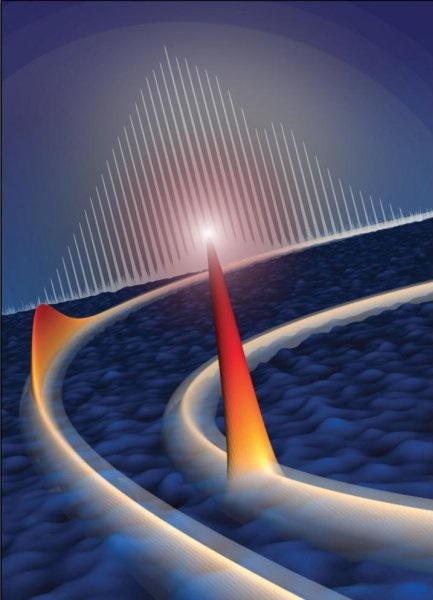March 20, 2019
by Stéphanie Thibault
Atomic clocks could be used to help people navigate without a GPS—if they were not so cumbersome and heavy. Miniaturisation is a challenge researchers have been struggling with for a number of years, and an international team has just made a big step forward. Using an optical frequency microcomb, a highly compact laser technology, the team boosted the efficiency of the counting mechanism in these ultra-precise clocks by 80%. The work, which is described in an article published in Nature Photonics, was conducted by researchers at the University of Sussex who were previously at Institut national de la recherche scientifique (INRS) and currently work in collaboration with Professor Roberto Morandotti.
In an optical atomic clock, the reference—the equivalent of the pendulum—is a beam of light. In terms of accuracy, it is the ultimate time keeper. The clock’s counting mechanism, an optical frequency comb, must count hundreds of billions of beam oscillations per second. Optical frequency combs are lasers that simultaneously emit a multitude of precise colours at evenly spaced frequencies.
Mircocombs reduce the size of frequency combs by using tiny devices known as optical microresonators. This improvement represents a tantalizing step toward realizing the full potential of frequency combs in a compact form. However, these microcombs generally lack the precision and stability required for atomic clocks.
The international team has discovered an exceptionally efficient and robust microcomb based on a unique wave type called a laser cavity soliton. The system incorporating this microcomb is at least 10 times lighter and 20 times smaller than currently available commercial systems, and also more energy efficient. Not only can the device be used in atomic clocks, it can also be used to improve a wide range of optical frequency comb–based applications in fields such as telecommunications, astronomy, optical metrology, and high precision spectroscopy.
The work was conducted in the United Kingdom under the leadership of former INRS post-doctoral fellows Dr Alessia Pasquazi and Professor Marco Peccianti, in partnership with Professor Roberto Morandotti. Benjamin Wetzel, previously an INRS post-doctoral, and Luigi di Lauro, who recently became post-doctoral fellow in Professor Morandotti’s group, are also coauthors on the article. ♦













